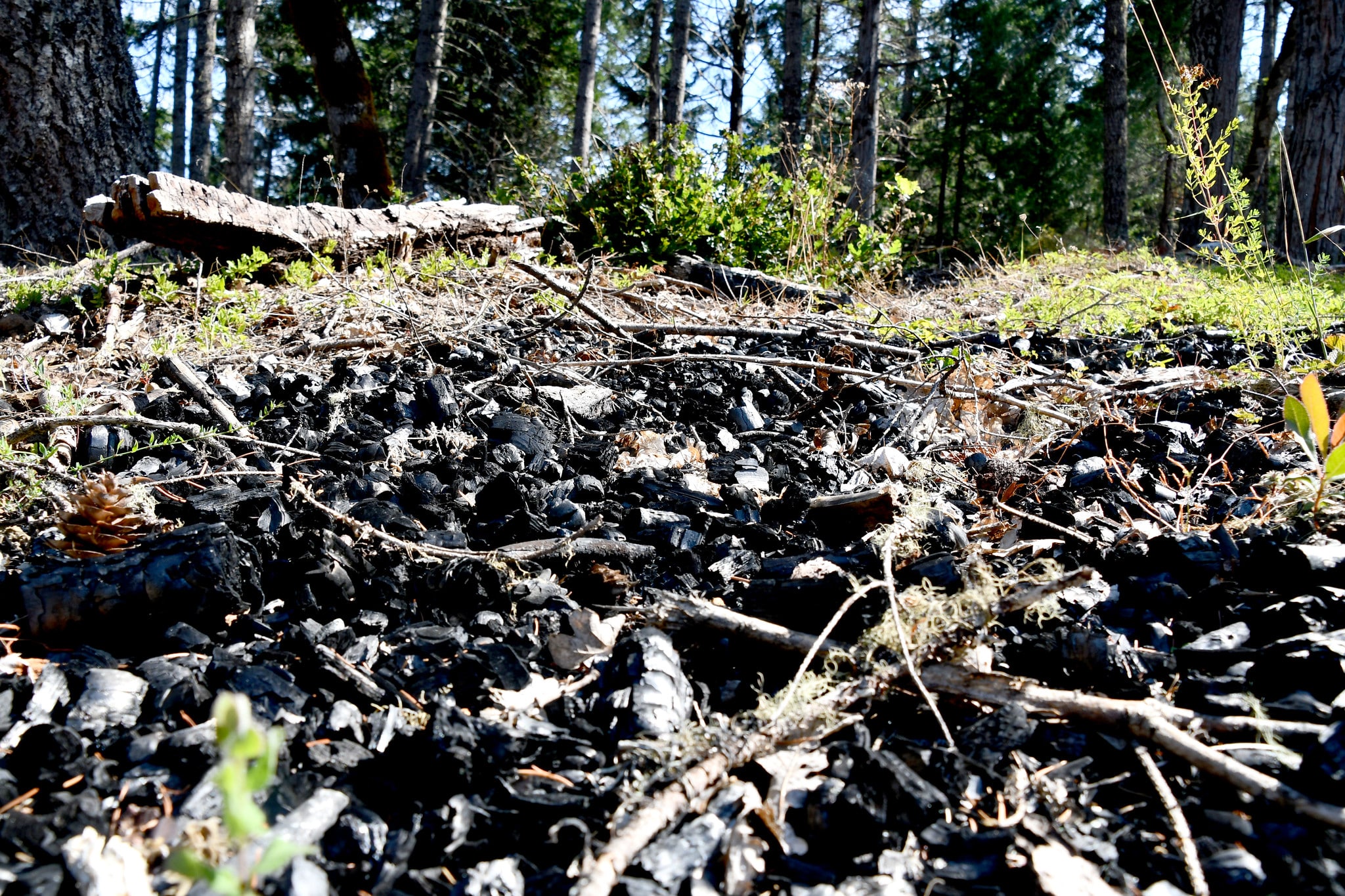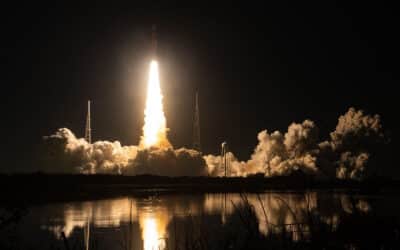This update on Biochar summarises the latest developments on the Geoengineering Monitor Map, highlighting new trends to aid civil society and climate justice movements in their efforts to oppose geoengineering globally. It was researched and written by Anja Chalmin and published with the support of the Geoengineering Monitor team.
Biochar developments covered in this update
- Lucrative carbon offset sales are driving an accelerating growth in the number and scale of biochar production sites around the world, despite the lack of conclusive evidence that biochar production can remove carbon from the atmosphere in the long term.
- According to CDR.fyi, 16 of the top 20 Carbon Dioxide Removal (CDR) carbon credit sellers are biochar producers, making biochar by far the CDR method that generates the most income on the voluntary carbon market.
- A growing number of commercial biochar projects selling carbon credits are headquartered in the Global North but being implemented in the Global South. This includes Dutch company Carboneers United, which produces biochar in Ghana and India, and US company Biochar Life, which develops biochar projects in Kenya, Malawi and Thailand. Both companies train smallholder farmers to produce biochar in rudimentary pit kilns.
- The large-scale deployment of biochar production using wood as a feedstock risks harming forests and other ecosystems. This is exemplified by steel producer Aperam, which is planning to expand its monoculture eucalyptus plantations in Brazil in order to produce more biochar, even though these plantations have been linked to severe water shortages.
- The use of agricultural feedstocks for biochar production could cause indirect land-use change by displacing food crops, and also take up valuable residual commodities that could be used in other ways. An example of this is the Katunga Fresh biochar project in Australia, which is producing biochar from straw bales.
- Biochar producers are exploring new feedstocks, such as invasive plants and seaweed. Examples include PyroCCS, which is buying biomass from livestock farmers in Namibia who are trying to keep their grasslands free of shrubs, and Carbon Kapture Ltd., which is growing kelp across European coastlines to harvest, dry and use to produce biochar.
Carbon credits are typically used in emissions trading schemes in which governments limit the carbon emissions of certain industries. The credits are tradable certificates, each representing one tonne of CO2. Companies that exceed their allowed limits must acquire new credits to increase their cap, and unused credits can be sold.
Carbon offsets are a carbon trading mechanism that enables emitters to compensate for greenhouse gas emissions by investing in projects that reduce, avoid, or remove emissions elsewhere. Emission offsets are monetised on the voluntary market, and it is common for these markets to refer to them as voluntary carbon credits. An example of this is an airline’s offer to reduce the carbon footprint of a flight through the voluntary purchase of carbon credits.
Although carbon offsets and carbon credits are different, they are often used interchangeably. Sellers of carbon offsets typically market them as carbon credits.
Introduction
Biochar is produced from biomass through pyrolysis, a conversion process where biomass, typically from forestry or agricultural sources, is heated in a low-oxygen environment to produce a solid, charcoal-like substance. In theory, biochar stores CO2 that plants absorb from the atmosphere in a more stable form, because pyrolysed carbon decomposes more slowly than organic carbon. There are both technically advanced and low-tech methods of producing biochar. Low-tech methods, such as biochar kilns similar to traditional charcoal kilns, have facilitated the commercialisation of biochar as a Carbon Dioxide Removal (CDR) method.
However, as Biofuelwatch points out in its 2024 report Biochar: A critical perspective, the inconsistent results of scientific studies involving biochar mean that there is still no conclusive evidence demonstrating that biochar production is a viable and effective way of removing carbon from the atmosphere over meaningful timescales. In the absence of multi-decade biochar field trials, industry claims about long-term carbon residence times are based on modelling or extrapolation from short-term laboratory and field trials. Field studies to date show very mixed results, including variations in biochar decomposition rates, low carbon residence times in tropical soils or at lower soil pH. In some cases, losses of existing soil organic carbon following biochar application can even be higher than the amount of carbon added to soils in the form of biochar.
Biochar is typically applied to arable land. However, biochar production can generate pollutants such as carcinogenic and mutagenic polycyclic aromatic hydrocarbons (PAHs). Applying biochar containing PAHs to soils contaminates crops, posing a cancer risk to humans. PAHs are also toxic to aquatic organisms and can have adverse effects on soil organisms. PAHs are persistent, which means that biochar has the potential to cause permanent pollution, and that PAHs can build up in the soil as a result of repeated applications of biochar. Other potential soil pollutants in biochar include dioxins, polychlorinated biphenyls (PCBs) and heavy metals. There are also studies showing that biochar may negatively affect soil water availability and increase soil erosion. On top of this, large-scale biochar production and deployment would carry the risk of causing serious negative impacts from land use change, as a result of the huge additional biomass demand.
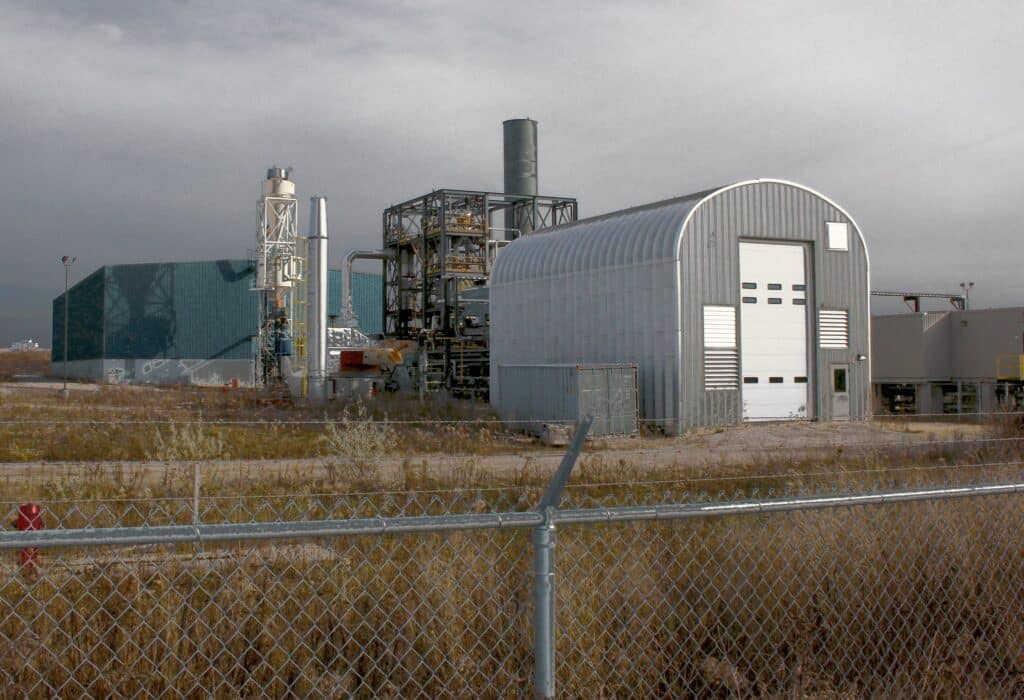
Due to strong financial support and investment from the private sector and the purchase of carbon credits by companies such as Microsoft, Google, JPMorgan Chase, Frontier, Stripe, British Airways, Swiss Re and Shopify, the number of companies producing biochar around the world is growing steadily. Biochar is the leading CDR technology in terms of carbon credit sales. A major reason for its high share of sales is likely to be the price of biochar on voluntary carbon markets, which is well below the average price of carbon credits for other geoengineering technologies (but still a multiple of the average price of so-called nature-based solutions such as forest offsets)1. According to CDR.fyi, which tracks carbon credit purchases, 16 of the top 20 CDR carbon credit sellers are biochar producers (as of February 2025). Of these:
- Seven companies are based in and produce biochar in North America: Charm, Douglas County Forest Products, Freres Lumber Co. Inc., Oregon Biochar Solutions, Pacific Biochar Benefit Corporation, Vaulted Deep, and Wakefield Biochar;
- Two companies are based in and produce biochar in Europe: Carbofex Oy and Carbon Cycle GmbH & Co. KG;
- Five companies are based in the Global North but produce biochar in the Global South: Aperam/Aperam BioEnergia Ltd, Biochar Life P.B.C., Carboneers United B.V., MASH Makes AS, and Planboo Eco;
- Two companies are based in and produce biochar in the Global South: Exomad SRL in Bolivia and Varaha Climate AG Pvt Ltd in India.
How much biomass would large-scale biochar deployment require? As an example, Bergero. C. et al. (2024) calculate that 3.65 tonnes of switchgrass is required to produce one tonne of biochar, and Li S. and Tasnady D. (2023) report that switchgrass biochar has an average carbon content of 66%. This means that 5.55 tonnes of switchgrass is needed to sequester one tonne of carbon. Scaling this up to gigatonnes of removals would involve a staggering amount of biomass—and land to grow it on. It is also important to note that not all of the carbon in biochar is stable over long timescales.
Biochar production using forest wood as a feedstock
Biochar producers that use wood as a feedstock commonly claim that their biochar is produced exclusively using forestry waste or residues, such as tree branches or sawdust. However, these terms can be used to refer to any type of forest wood, whether whole trees or genuinely residual biomass. Even wood waste and residues are a limited resource and a valuable commodity because they can have multiple uses. Sawdust, for example, can be turned into wood composites for furniture. With increasing amounts of forest biomass being used for biochar production globally, there is a greater likelihood that this will increase pressure on natural systems.
Aperam BioEnergia expands its forestry operations in Minas Gerais, Brazil
Aperam South America is a major producer of stainless steel and a subsidiary of Luxembourg-based Aperam SA, which was formed as a result of the break-up of ArcelorMittal’s stainless steel division. Aperam has become a global player in the steel industry, producing 2.5 million tonnes of stainless steel per year.
Aperam South America’s subsidiary Aperam BioEnergia was established in the 1970s to produce charcoal for steel production. Aperam BioEnergia is located in the Jequitinhonha Valley in northeastern Minas Gerais, Brazil. It operates six production sites, producing a total of ~420,000 tonnes of charcoal per year. The sites, called Unidades de Produção de Energia Renovável (UPER), are UPER Chacara, UPER Cruz Grande, UPER Lagoa, UPER Palmeiras, UPER Pontal and UPER São Bento. Each has a different number of pyrolysis units, and the charcoal produced is transported to Aperam’s steel plant in Timóteo, Minas Gerais, some 350 km away. Since biochar has gained prominence as a CDR technology, Aperam BioEnergia now refers to the fine charcoal they produce as biochar and, instead of sending it to the steel mill, spread it in their eucalyptus plantation areas in order to sell carbon credits. According to CDR.fyi, the company has sold more than 100,000 tonnes worth of carbon removal credits on voluntary carbon markets since 2021, mostly through Puro.earth. Since 2023, Aperam has also been marketing pyrolysis oil (a byproduct of the pyrolysis process also referred to as biocrude or bio-oil).
The biomass used for charcoal and biochar production is sourced from about 125,000 ha of FSC-certified planted and native forests, most of which are non-native monoculture eucalyptus plantations. In 2025, Aperam BioEnergia announced plans to expand its biochar operations in Minas Gerais, with a 20% increase in forestry area, more than two thirds of which corresponds to monoculture eucalyptus plantations. Puro.earth claims that Aperam BioEnergia’s “forests have important biodiversity and economic impacts on local communities,” but news reports suggest otherwise.
The large-scale eucalyptus monocultures planted by Aperam BioEnergia are said to be responsible for lowering the local water table by 4.5 metres over the past 45 years, causing water shortages that affect the local population. This is because eucalyptus trees use more water than native plants and alter the water cycle. Harm to human health has also been reported due to Aperam BioEnergia’s large-scale use of pesticides and insecticides. To establish eucalyptus plantations, the old woodlands were cleared and burned and resources used by the local population, such as wild fruits, were lost2. Aperam BioEnergia responds to these allegations by claiming that eucalyptus trees consume the same amount of water as native forests and arguing that its “renewable” plantations have reduced impacts on native flora and fauna, control erosion and help regulate the quality and flow of water resources.
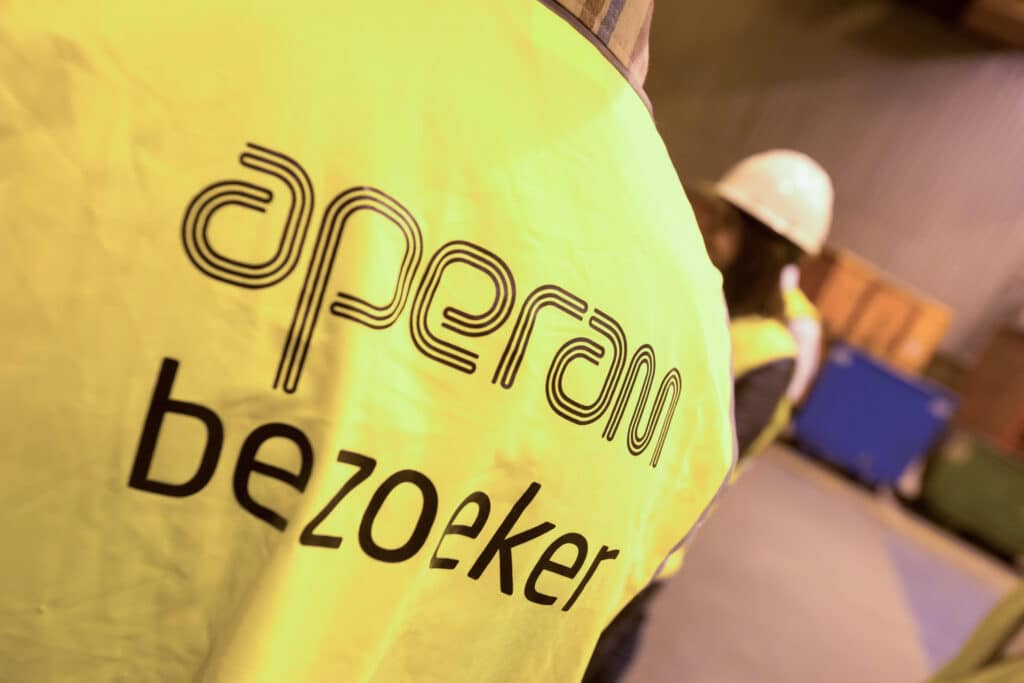
Novocarbo GmbH raises funds for new Carbon Removal Parks across Europe
German company Novocarbo GmbH describes itself as a developer and operator of Carbon Removal Parks that produce carbon credits, energy and biochar. It trademarked the term Carbon Removal Park in 2023. Novocarbo GmbH developed three parks between 2018 and 2023, and a fourth has been under construction since the end of 2024. All are located in Germany and, according to Novocarbo, they produce between 640–3,300 tonnes of biochar and capture up to 6,000 tonnes of CO2 per year. In 2024, the company signed a multi-year offtake agreement with carbon offset project developer Anthesis Climate Neutral Group and raised €25 million from the investment and asset management firm SWEN Capital Partners, which it plans to use for new Carbon Removal Parks across Europe.
Biochar producer in Quebec, Canada, raises millions of dollars from public and private sources
Airex Energy was formed in 2010 as a subsidiary of Airex Industry and is headquartered outside Montreal. The company develops and sells proprietary technologies to convert sawmill by-products, logging residues and forest biomass into pellets and biochar. It operates a demonstration pellet plant in Bécancour, on the St. Lawrence River.
Airex Energy says its automated CarbonFX™ pyrolysis unit can process a wide range of feedstocks, including sawdust, bark, shavings, wood chips, recycled wood, forest biomass and agricultural residues. The company’s biochar production process involves grinding the biomass to the size of sawdust, pre-drying it using Airex Energy’s DryFX™ unit to reduce the moisture content to less than 5%, then heating it to 500–700°C in an oxygen-limited environment.
In 2023, Airex Energy launched Carbonity, a joint venture equally owned by Airex Energy, French utility group SUEZ and Groupe Rémabec. Groupe Rémabec is a large privately-owned forestry and sawmill company that has been accused of causing deforestation in indigenous territories for several years, despite fierce protests. Carbonity is commissioning a biochar production plant that will use Airex Energy’s pyrolysis technology in Port-Cartier, Québec, with construction estimated to cost CAD 80 million. The project aims to produce 10,000 tonnes of biochar in 2025 and triple this amount by 2026. In 2023, Carbonity received CAD 7.5 million in funding from Natural Resources Canada and a CAD 3 million loan from Canada Economic Development for Quebec Regions. In 2023, Airex Energy raised CAD 38 million in order to expand its production and sell “more than a million tonnes of carbon credits on the voluntary market by 2035.” In 2024, Microsoft announced the purchase of 36,000 carbon credits over the following three years.
Bolivian company Exomad SRL plans to bring new biochar capacity online
Exomad SRL is a leading exporter of tropical hardwood sawn timber and veneers in Bolivia, and a leading seller of biochar-based carbon credits. Based in the eastern region of Bolivia, Exomad founded its subsidiary Exomad Green in 2023 and began building biochar plants to convert what the company describes as “hardwood forestry residues” into biochar. The first plant was commissioned in Concepción in 2023, the second in Riberalta in 2024, a third is under development in Guarayos and two more are in the pipeline. The two operational biochar plants are said to both be able to capture up to 60,000 tonnes of CO2 a year, and Exomad plans to double this capacity by 2025. The company aims to have five biochar plants operational by 2027 with a combined CO2 capture capacity of 800,000 tonnes per year. According to CDR.fyi, Exomad has sold more CDR credits than any other company, totaling 360,000 tonnes.
Wakefield Biochar LLC expands biochar production in Georgia (USA)
Wakefield Biochar LLC, based in Valdosta, Georgia, is producing biochar at three sites, in partnership with pulp and sawmills. In 2024, a new pyrolysis facility was commissioned at the West Fraser-Fitzgerald Sawmill to produce biochar from sawdust, and sawdust is also the feedstock at Wakefield’s pyrolysis facility at Georgia-Pacific’s Brunswick Cellulose pulp mill in Brunswick, Georgia. A new pyrolysis facility was added to the company’s Valdosta site to increase production volume, and its pyrolysis plant at Georgia-Pacific’s Foley Cellulose ceased operations when the mill was closed.
Pacific Biochar Benefit Corporation (PBBC) is about to open its 5th biochar plant in the US
PBBC began producing biochar at its facility in Hawaii in 2011. In 2019, the company entered into an agreement with Humboldt Sawmill Company to produce biochar at its combined heat and power (CHP) plant in Scotia, California. In 2022, biochar production commenced in partnership with Georgia Renewable Power at its facilities in Colbert and Carnesville, Georgia. PBBC’s 5th biochar plant is nearing completion at Honey Lake Power’s 30 MW bioenergy plant in Wendell, California. According to PBBC, it sources biomass from designated high fire hazard areas in California, through forest thinning, power line clearing and logging operations, as well as sourcing from sawmills. The company sells carbon offsets to customers including Microsoft through the Carbonfuture carbon market.
Freres Lumber Co., Inc. sells carbon offsets to the aviation and shipping industries
Evergreen BioPower LLC is a 10 MW biomass CHP plant built in 2007 and operated by Freres Lumber Co., Inc. in Lyons, Oregon, USA. Freres Lumber produces engineered wood products and has five manufacturing facilities. Freres Lumber produces biochar at the Evergreen BioPower plant and, according to the company, the biochar feedstock consists of waste wood such as pallet grindings, ply trim and sawdust (62 %), forest biomass (28 %), agricultural residues (10 %) and food processing residues (0.3 %). Freres Lumber sells carbon credits and its customers include Blackrock, Microsoft, Polaroid, Puro.earth, Shopify, Softwire and Supercritical, among others. It is also offered as a carbon offset option by Alaska Airlines, British Airways and Route (for e-commerce shipping).
Douglas County Forest Products is sourcing its biochar feedstock from sawmills
Douglas County Forest Products is a sawmill located in the Umpqua Valley in Oregon, USA, and also produces biochar. According to the company, its biochar feedstock consists of woodchip, sawdust, bark and shavings sourced from the company’s own operations and the local region, and the biochar is used by local farmers. Carbon credit customers include Banque Pictet, Dropbox, and Uber Technologies.
BluSky Carbon Inc signs letters of intent for projects in Namibia, Tanzania and USA
BluSky Carbon Inc, founded in 2023 and headquartered in Old Saybrook, Connecticut, USA, develops, builds and sells pyrolysis, direct air capture and carbon mineralisation technologies, and sells carbon credits. In 2024, BluSky commissioned its first biochar plant in Warren, Arkansas, and plans to build its second plant in Northwest Arkansas. The plant will combine BluSky’s Vulcan biomass pyrolysis system, Kronos direct air capture system and Medusa carbon mineralisation technology. In Warren, the biochar feedstock is softwood woodchip, primarily yellow pine and feedstock for the Old Saybrook plant will be sourced from the local forest industry. The company has already signed a US$ 1.25 million agreement with the SQUAKE.earth GmbH carbon market. In November 2024, BluSky and Red Mountain Biochar announced their BluMountain Carbon joint venture and preliminary agreements for commercial biochar production and carbon credit sales in Orlando, Florida and in Tanzania. In the same month, BluSky signed a preliminary joint venture agreement with Ikigai Carbon Corporation to develop biochar projects and generate carbon credits in Namibia.
Heating company and forest owners’ cooperative launch biochar project in southern Norway
Oplandske Bioenergi AS (Obio AS), founded in 2022 and based in Rudshøgda, Norway, is owned by the local district heating company Eidsiva Bioenergi (60%) and Glommen Mjøsen Skog (40%), a forest owners’ cooperative that is one of Norway’s largest players in the forestry sector. The biochar feedstock used is woodchip supplied by Glommen Mjøsen Skog, and the biochar produced is sold as a feed supplement for livestock and as an agricultural soil conditioner. The heat generated during the pyrolysis process is used by Obio AS to dry the woodchip it uses, and is also connected to Eidsiva Bioenergi’s local district heating system. Eidsiva Bioenergi invested NOK 14.5 million in the biochar project in 2023.
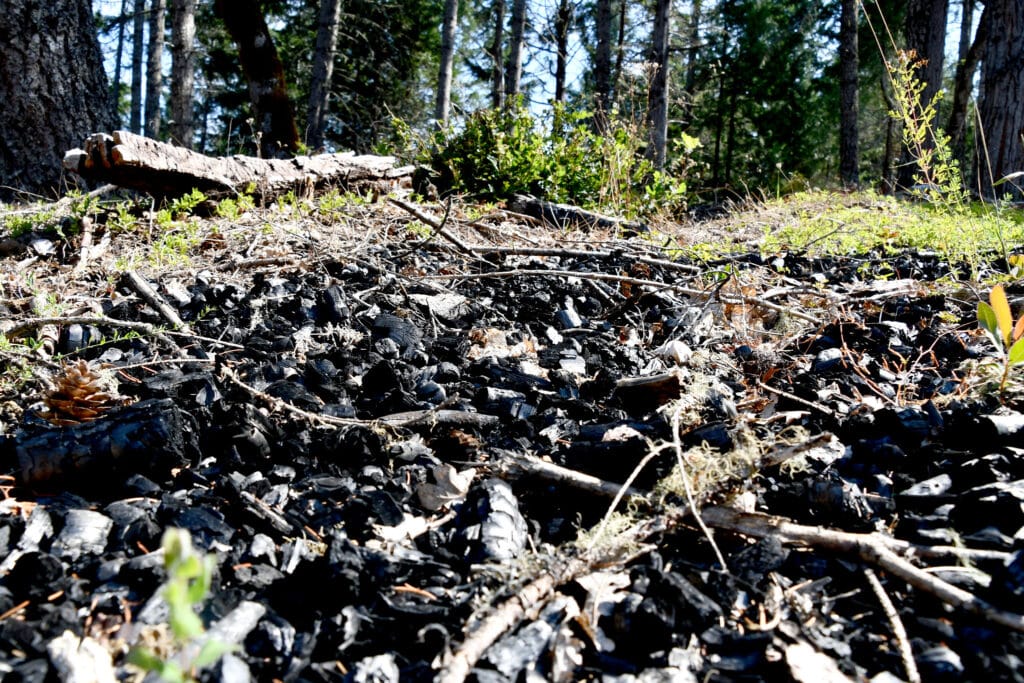
UK company A Healthier Earth to develop biochar projects across four continents
Established in 2022, A Healthier Earth Ltd is a wholly owned subsidiary of UK-based Pure Data Centres, which designs, builds and operates data centres around the world. In 2024, A Healthier Earth announced plans to build the UK’s largest biochar plant in Royal Wootton Bassett, Wiltshire, using “urban green waste” as the feedstock. The plant is expected to be operational in 2025 and will use pyrolysis technology developed by Germany-based Pyreg GmbH. The company is also developing biochar projects in Australia, Indonesia, Malaysia and the United Arab Emirates.
German company combines biochar production and project development consultancy
Carbon Cycle GmbH & Co. KG is based in Rieden, Germany and produces biochar, sells carbon credits and offers biochar project development consultancy services. The company’s biochar is produced from energy-grade woodchips and sold under the brand name Carbon Cycle, mainly to the agricultural and livestock sectors. The consultancy services focus on commercial issues related to biochar projects, including markets, products and the financing of new biochar projects.
Consultancy firm GECA provides access to biochar-based carbon credits
GECA Environment, based in Québec City, Canada, provides global consulting services to current and prospective biochar producers who wish to sell carbon credits on carbon markets, including producers using biomass from forestry operations as feedstock.
Biochar production using invasive species as a feedstock
Several companies are producing biochar from invasive plants such as woody shrubs and bushes that invade grassland areas (known as bush encroachment), predominantly in Australia, India and Namibia.
225,000 hectares leased in Australia to produce biochar using an invasive weed
Biomass Projects, founded in 2022, aims to produce biochar and sell carbon credits using an invasive woody weed called mesquite (Prosopis spp.) as a feedstock. The weed will be sourced from a 225,000 hectare area in the Pilbara, an arid and sparsely populated region with large rangelands in Western Australia, more than half of which is infested with mesquite. Biomass Projects and the Wirrawandi Aboriginal Corporation have signed a 15-year lease for the project, which involves 14 modular biochar production units and spreading the biochar produced across the 225,000 hectare site. The company aims to pyrolyse 10.5 million tonnes of biomass in order to produce 3.7 million tonnes of biochar over 20 years. In 2024, the company was selected to receive an AUD 8.6 million conditional grant from the Western Australian government, and carbon market Puro.earth has listed the project as being able to deliver 4.7 million carbon credits over the next decade at an average price of €135/t CO2e.
Google buys carbon credits from Indian company Varaha Climate AG
Varaha Climate AG is based in Gurgaon, south-west of Delhi, India, and was founded in 2022. The company sells carbon credits generated in various ways, including from biochar production and enhanced weathering. Varaha’s first biochar production plant was developed in Kothur, Telangana, using agricultural residues such as corncobs as a feedstock, and in 2023 it commissioned biochar plants in the Indian states of Gujarat and Rajasthan, using invasive species such as Prosopis juliflora. Varaha raised more than US$ 12 million in funding in 2022 and 2023 and, in 2025, Google announced the purchase of 100,000 tonnes of carbon credits from the company, to be delivered by 2030. According to press reports, the credits will come from its pyrolysis facility in Gujarat.
Planboo Eco sells carbon credits from bush encroachment removal operations in Namibia
Swedish company Planboo Eco was founded in 2020 and develops biochar projects in the Global South in order to sell carbon credits. Planboo Eco says it currently has eight active projects, including in Colombia, Ghana, Namibia, Sri Lanka and Thailand, and new projects are under development, for example in Malawi and in Zambia. Most of Planboo’s biochar projects use agricultural and forest biomass as a feedstock, such as bamboo, rubber wood by-products, coffee plant prunings and cocoa pods. In Namibia, the Planboo biochar production site is based on the Gai Kaisa farm in the Grootfontein district of northern Namibia. The project is managed by Planboo in partnership with the local Omiti Biochar initiative and uses biomass harvested during bush encroachment removal operations to produce biochar in kilns, including species such as Acacia mellifera and Acacia reficiens, with the aim of restoring savanna grasslands. Biofuelwatch has pointed out that bush encroachment removal operations are primarily in the interests of large commercial livestock farmers.
According to CDR.fyi, the company had sold 27,000 carbon credits by December 2024, 11,100 of which were generated through the Namibia project and sold through the Puro.earth carbon market. In the same year, Planboo also secured more than US$ 1.1 million in funding from investment firms Katapult, Silverstrand Capital, Rockstart, Imaginal Seeds and 8+ Ventures, and plans to use the funds to expand its operations in the Global South. . In January 2025, the e-commerce platform Shopify signed an offtake agreement with Planboo Eco. Other partners and carbon credit customers include Airminers, McKinsey Company, and Supercritical.
German PyroCCS GmbH has commissioned biochar projects in Namibia and India
PyroCCS GmbH was founded in 2018 and commissions biochar projects in the Global South in order to sell biochar and carbon credits. It has operational projects in Namibia and India, and plans to commission new projects in Namibia, Indonesia and Malaysia.
In India, PyroCCS has developed four biochar projects in Gujarat, Karnataka, Madhya Pradesh and Uttar Pradesh and uses crop residues and invasive plant species, including Prosopis juliflora and Lantana camera, as a feedstock.PyroCCS’s Namibian subsidiary PyroNam Pty Ltd was established in 2022 and leases land from farmers in order to build and operate pyrolysis plants. According to PyroCCS, biomass is purchased from surrounding farmers, in the form of shrubs from bush encroachment removal operations that would otherwise destroy the savannah ecosystem. PyroNam has established its first biochar plant at Waltershagen Farm in the Otjiwarongo region, and more plants are being developed at Nog Verder Farm in the Otjozondjupa region, in the Omaheke region and at Waterberg. According to PyroNam, each biochar plant has the capacity to produce 1,000 tonnes of biochar per year using 3,000 tonnes of dry bush biomass. In 2024, PyroNam partnered with atmosfair gGmbH, an organisation that markets carbon credits primarily generated in the Global South. The collaboration aims to develop several biochar production sites across Namibia, starting with the project at Nog Verder Farm. PyroNam envisions having 350 biochar plants in operation by 2028, with each projected to cost approximately N$ 6 million.
Biochar production using agricultural residues as a feedstock
Due to the already limited availability of agricultural and forestry land, increasing biomass cultivation for biochar production would create even more competition between land uses. On top of this, biomass cultivation can also lead to environmental degradation and impacts on biodiversity through fertiliser and pesticide use. Land use changes, such as the conversion of grasslands to croplands or the use of land set-aside for conservation purposes, can threaten biodiversity and also lead to negative climate impacts. Indirect land-use changes have similar effects when arable land is used intensively to grow energy crops, meaning that land for food or feed production has to be found elsewhere.
MASH Makes AS breaks ground for its 2nd biochar production plant in India
Danish company MASH Makes, founded as a Technical University of Denmark spin-off, is producing biochar in the Udupi district of Karnataka, India. According to the company, its biochar is produced from agricultural biomass, mainly from cashew nut shells. In 2025, the company broke ground for a second pyrolysis plant adjacent to its existing facility with the aim of doubling its biochar and pyrolysis oil production capacity. MASH Makes plans to open a total of three new plants in 2025, and construction is currently being funded by a €2 million loan from Nefco, a finance corporation set up by Northern European governments, and sales agreements with carbon markets Supercritical, Shopify, Patch, and Carbonfuture.
Spanish company Husk Ventures SL expands to Vietnam
Husk Ventures SL was founded in 2017 and although it is headquartered in Spain, it produces biochar in Cambodia at a rice mill in Kampong Thom, using rice husks. In an interview with Reuters in 2022 one of the company’s founders describes carbon credits as “a total game changer,” as they have helped the company to multiply its revenue. In 2024, Husk Ventures registered Husk Vietnam as a subsidiary, and plans to open its first biochar plant in Vietnam in 2025. Vietnam’s Mekong Enterprise, a fund launched by Mekong Capital, invested US$ 5 million in Husk Ventures in 2024.
French company NetZero S.A.S. is scaling up its biochar production south of the Sahara and in Brazil
NetZero S.A.S., an offshoot of Pro-Natura International, which operated biochar projects in Africa and South America between 2002 and 2014, aims to scale up biochar production and carbon credit sales across the Global South. The company currently produces biochar at three sites, in Nkongsamba in Cameroon, and Lajinha and Brejetuba in Brazil. Two additional biochar production sites in Brazil, located in Machado and São João do Manhuaçu, are expected to be operational in 2025.
In autumn 2024, Moroccan ‘business builder’ INNOVX, a subsidiary of Morocco’s Mohammed VI Polytechnic University, invested € 7 million in NetZero. Following the investment, INNOVX and NetZero began a feasibility study looking at producing biochar from cashew shells in Côte d’Ivoire and announced further feasibility studies taking place south of the Sahara. In early 2024, NetZero was selected as an XPRIZE Carbon Removal Grand Prize finalist, a competition for a US$50 million grant for a CDR project, funded by the Musk Foundation. In the same year, the French infrastructure and impact fund STOA invested US$ 18 million in the company, and the Dutch impact investment cooperative Oikocredit provided an initial loan of US$ 2.5 million. Oikocredit aims to support the development of biochar plants in Brazil and has announced plans to provide more loans for new plants in the coming years.
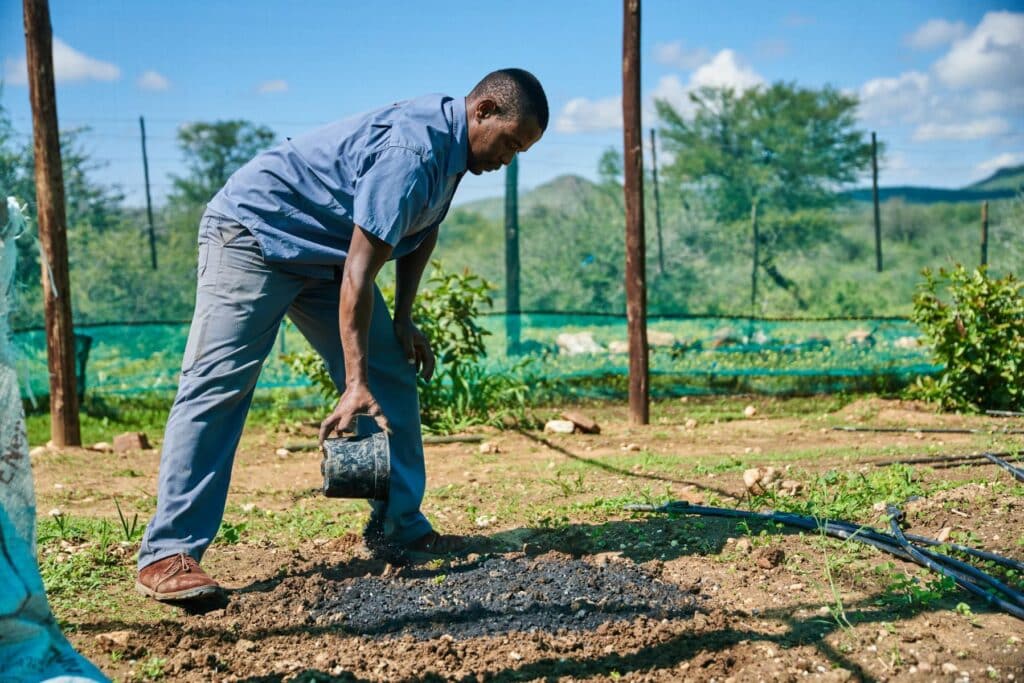
Swiss company The Next 150 SA sells carbon credits generated by its biochar plant in Mexico to Microsoft and Shell
Founded in 2022, The Next 150 SA describes itself as a “Carbon Removal Venture Developer and Operator“. In 2023, the company established its Mexican subsidiary, General Biochar Systems, and opened its first biochar plant in Guanajuato, Mexico. The Next 150 and Kemexon, a commodity trading company operating in the fossil fuel products, chemicals, metals and bioenergy markets, invested US$ 5 million in the plant. According to The Next 150, the biochar feedstock is agricultural residues from corn, wheat, sorghum and other crops, and the biochar produced is sold to quarry restoration operations and to local farmers. The Next 150 SA sells carbon credits to companies such as Microsoft and Shell and has announced plans to construct more biochar plants in Latin America.
British company Bio-Logical Carbon plans to sell carbon credits generated in Kenya
Bio-Logical Carbon Ltd, registered in Northampton, UK, opened its first biochar production plant in Kabati, Kenya, in 2024. According to the company, its biochar is produced from agricultural residues. In July 2024, the company announced plans to establish three more biochar production sites across Kenya over the following 18 months, funded by US$ 2.3 million it raised in 2024 and 2023. Investors include investment group CrossBoundary, business consultancy Redshaw Advisors, investment group Steyn Group and angel investors Rob Konterman, Luke Calcott-Stevens and Jochem Wieringa. In 2024, Microsoft purchased 10,000 CO2 removal credits for delivery in 2024/2025.
Austrian company’s new biochar project delayed
Sonnenerde GmbH commissioned its first biochar plant in 2012, producing biochar from compost sifting residues. Since 2022, the company has been working to build a larger biochar plant in order to increase its annual production capacity tenfold. The company aims to finance the new plant with carbon credit agreements sold up to five years in advance of delivery. Completion of the new plant has currently been delayed by one year, which could be due to the fact that the € 250 per tonne of CO2e it is offering is well above the average for CDR credits on the voluntary carbon market.
German company Pyreg GmbH offers new financing model for biochar plants
Pyreg GmbH, founded in 2009 as a TH Bingen University of Applied Sciences spin-off, designs and manufactures pyrolysis plants for biochar projects. Since 2009, Pyreg has installed more than 50 pyrolysis plants worldwide with clients including Novocarbo GmbH and Sonnenerde GmbH. The company describes its plants as ‘Net-Zero Technology‘ and also offers the registration and marketing of carbon credits through the Carbonfuture and Puro.earth carbon markets. Pyreg also offers a financing model for the construction of its plants in the agricultural sector through carbon credit sales in cooperation with the insurance company Kita. Due to increasing demand, Pyreg is currently expanding its production capacity in Dörth, Germany and Maine, USA, through financing made possible in part by its new shareholder Vaering.
Public funding boosts Katunga Fresh’s biochar project in Victoria, Australia
Rainbow Bee Eater Pty Ltd has developed the ECHO2 pyrolysis plant which produces syngas and biochar. It tested a plant prototype from 2018 to 2022 and commissioned its first commercial module in 2024 at glasshouse herb producer Holla Fresh in South Australia. Another six modules were expected to be operational by the end of 2023 at Katunga Fresh, one of Australia’s largest tomato growers with a 21 ha glasshouse facility in Katunga, Victoria, but commissioning has been delayed. In 2024, Katunga Fresh received AU$ 1 million from Sustainability Victoria’s Waste to Energy Bioenergy Fund to install the pyrolysis units. Starting in 2025, Katunga Fresh plans to convert bales of wheat straw (which it also produces at the same site) into biochar for use on its agricultural fields, syngas for heating, and CO2 for fertilising the glasshouses. Although wheat straw is described as a residue by the company, it is a valuable commodity that can be used in other applications. The Australian government is promoting the use of straw bales for low-cost insulation in housing, and other uses include bedding, mulch and erosion control.
US-based company Biosorra to sell carbon credits from biochar plant in Kenya
North Carolina-based Biosorra LLC opened its first biochar production facility in Kiambu County, Kenya, in 2023. Its biochar is produced from agricultural residues, including nut shells, and is sold under the brand name Biochar Bora. The company has started selling carbon credits, stating that three tonnes of plant biomass sequester one tonne of CO2e and that the CO2 in biochar is “permanently stored” for 1,000 years. In 2024, the carbon market Klarna announced plans to make a pre-purchase from Biosorra, and the company also sold around 100,000 tonnes of CO2e through the Carbonfuture carbon market.
Dutch company Carboneers United markets carbon credits from projects in Ghana and India
Carboneers United B.V., founded in 2021, is working with local partners in Ghana and India to produce biochar and sell carbon credits. In India, Carboneers works with SRC Natura Products Ltd, a horticultural marketing company, in Assam and Odisha. In northern and eastern Ghana, the company is working in the Volta, Upper West, Savannah and Northern regions, in cooperation with the West African carbon credit organisation Beyond Karbon, the Mennonite Economic Development Associates (MEDA) and the Professional Network Association (ProNet). The biochar is produced by local farmers through soil pit and chamber kiln pyrolysis using biomass such as corn cobs and stalks, cocoa pods, cotton stalks, fruit tree prunings, rice straw, sorghum stalks and soybean stalks as the feedstock. The biochar produced is spread onto agricultural fields.
Biopower Tana eyes expansion in Norway and Thailand
The Norwegian company Biopower Tana AS, founded in 2020 and based in Austertana, Finnmark, plans to sell carbon credits through the puro.earth carbon market. After completing a feasibility study, its first biochar plant will be commissioned in Austertana this year. Biopower Tana plans to produce biochar using residual biomass from a number of sources, including forestry operations, dairy farms, slaughter houses and fish farms. In addition to selling carbon credits and biochar, Biopower plans to use biochar in fertiliser pellets and use the residual heat from the pyrolysis process. From 2026, Biopower Tana plans to expand to other locations including Børøya in Norway and Koh Phangan and Koh Samui in Thailand.
Australian company Pacific Biofuels Holdings expands hemp production into Nevada, US
Pacific Biofuels Holdings (PBFH Pty Ltd) was established in Australia in 2021 to produce biochar, biofuels and activated carbon from hemp and sell carbon credits. PBFH has leased large areas of land for hemp cultivation in Australia and 3,000 ha of savannah land in Papua New Guinea. In 2024, PBFH secured 1,000 hectares of established hemp farmland in Nevada, USA. Biochar production in Nevada was expected to begin in the fourth quarter of 2024, but no recent updates are available. In 2023, the Puro.earth carbon market offered PBFH carbon credits at € 90 each, but as of January 2025 the listing had been removed.
US company Biochar Life develops biochar projects in Kenya, Malawi and Thailand
Biochar Life P.B.C. operates primarily in Kenya, Malawi, and Thailand, and sells carbon credits on the Carbonfuture carbon market. The company trains smallholder farmers to produce biochar in trenches, troughs and in top-lit updraft gasifiers and apply biochar to agricultural land. In 2025, Biochar Life also plans to deploy the WasteX Carbonizer in the areas it operates in, a small, semi-automated pyrolysis reactor developed in Singapore by WasteX Pte.Ltd.
Biochar production using seaweed as a feedstock
Several companies are attempting to produce biochar from seaweed, though this sector has developed slowly in comparison to the production of biochar from agricultural and forestry biomass.
Carbon Kapture expands its network of seaweed farms
UK-based Carbon Kapture Ltd is developing seaweed farms to grow feedstock for biochar production. The seaweed, usually the brown macroalgae Saccharina latissima commonly known as sugar kelp, grows on long ropes seeded with young seaweed seedlings and anchored to the seabed. The kelp is harvested, dried and processed into biochar, which is then spread on agricultural land, and carbon credits are sold on this basis. The company established its first farm in 2022 in Mulroy Bay, northwest Ireland, and since then, 11 more farms have followed, one each off the coasts of Spain and Portugal, four off the coast of the UK and five off the coast of France. Carbon Kapture is also looking at other sites outside Europe, including off the coasts of Singapore, Newfoundland and the Seychelles. In 2020, the company announced that it would develop a network of 10,000 farms by 2030, but in 2023 this target was reduced to 200 farms over 10 years. Another target of achieving one million metres of seaweed-seeded rope in the water by the end of 2023 has been delayed to the end of 2025.
King Tide Carbon’s efforts in developing a marketing channel for algae-based carbon credits
King Tide Carbon PTE Ltd, a wholly owned subsidiary of UK-based wellness company Cellular Goods PLC, aims to produce algae biomass and sell carbon credits. In 2023, the company entered into a joint venture with Springtide Seaweed LLC with plans to process the harvested seaweed into biochar or dispose of it in the deep ocean (see our recent update on biomass sinking), although the lack of news since the companies signed a Memorandum of Understanding with the Carbon RX carbon market in early 2024 suggests that the collaboration may have ended.
Geoengineering research pioneer SINTEF undertakes biochar from seaweed research projects in Norway
The Seaweed Carbon Solutions Joint Industry Project (JIP), a research project led by the Foundation for Industrial and Technical Research (SINTEF) in Norway, aimed to verify the CO2 removal potential of seaweed and was conducted at the Norwegian National Seaweed Centre’s seaweed farm off the coast of Trøndelag. The project investigated the design, development and operation of a large-scale project aiming to grow seaweed for CO2 removal, where 90% of the seaweed would be processed into biochar and applied to soils and the remaining 10% sunk to the seabed. A report on the results of the project is not yet available, but the production process is likely to be energy-intensive because, to produce biochar, the seaweed must first be transported onshore and dried before being pyrolysed. The project was conducted in collaboration with industrial partners, including Aker BP, DNV, Equinor, Wintershall and Ocean Rainforest. SINTEF’s new research project, GP Seaweed, also looks at the production of biochar from cultivated seaweed for CDR.
Endnotes
- Supercritical, accessed 02/2025, Figure: Average price of carbon removal methods in 2025, https://gosupercritical.com/blog?p=how-much-do-carbon-removal-credits-cost-in-2024; CDR.fyi, accessed 02/2025, Table: Pricing Change | 2023 – 2024, Weighted Average Price per Tonne, https://www.cdr.fyi/blog/2024-year-in-review ↩︎
- Juliana Afonso and Nina Rocha, “ Da Seca à Violência de Gênero: Consequências da Produção de Eucalipto no Vale do Jequitinhonha,” Modefica, 8 February 2022. https://www.modefica.com.br/da-seca-a-violencia-de-genero-eucalipto-vale-do-jequitinhonha/; KarinaTarasiuk and Paula Bianchi, Eucalipto que garante CO2 neutro da Aperam Bioenergia seria responsável por secar reservas” A publica, 7 July 2022. https://apublica.org/2022/07/eucalipto-que-garante-co2-neutro-da-aperam-bioenergia-seria-responsavel-por-secar-reservas/; Arvoreagua, Plantação de eucalipto não é floresta, 2023. https://arvoreagua.org/biodiversidade/plantacao-de-eucalipto-nao-e-floresta; Arvoreagua MPF pede suspensão do monocultivo de eucalipto, 2023. https://arvoreagua.org/povos-tradicionais/indigenas/mpf-pede-suspensao-do-monocultivo-de-eucalipto; Caroline Oliveira and Carolina Caldeira (2023): “Traditional communities face drought in a territory sieged by eucalyptus in the north region of Minas Gerais state,” Brasil de Fato, 28 November 2023. https://www.brasildefato.com.br/2023/11/28/traditional-communities-face-drought-in-a-territory-sieged-by-eucalyptus-in-the-north-region-of-minas-gerais-state; Astrid Prange de Oliveira, “Brazil: The rise and risks of ‘green’ eucalyptus charcoal,” Deutsche Welle, 20 January 2024. https://www.dw.com/en/brazil-the-rise-and-risks-of-green-eucalyptus-charcoal/a-68003328 ↩︎
